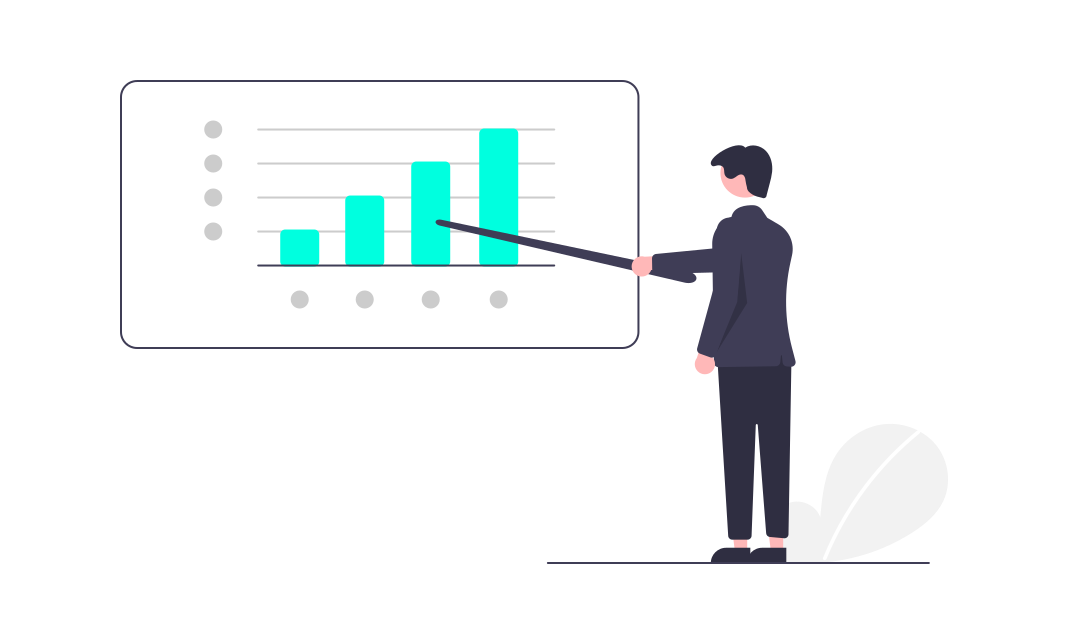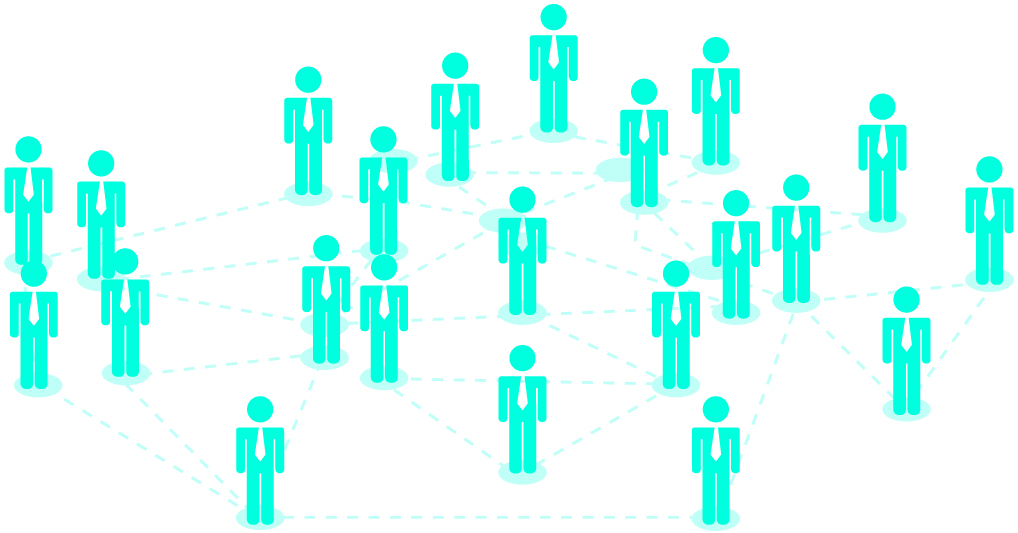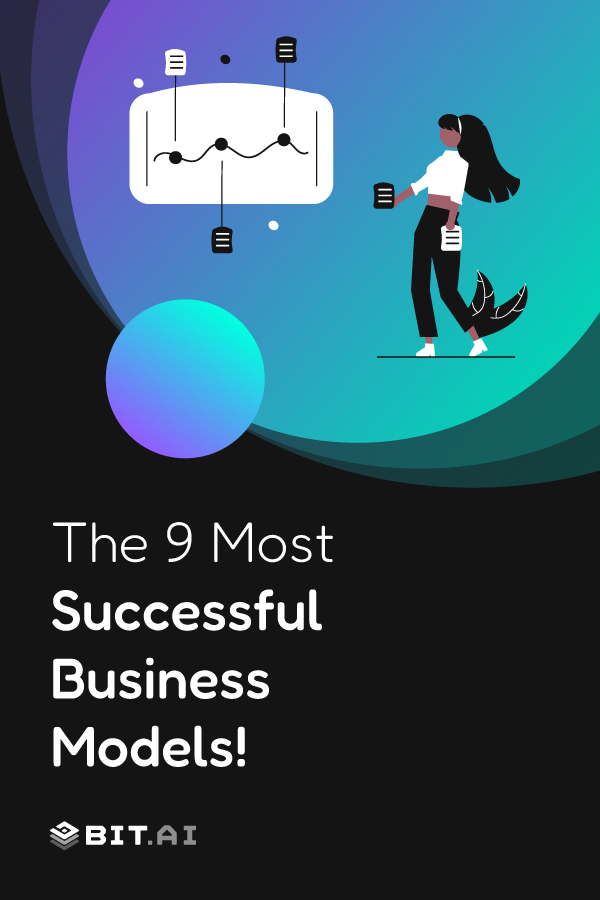When you are starting a business, you have to make a lot of decisions and choices. One of the biggest and most tedious decisions is – which business model should I pursue?
Deciding how you’re going to sell your product, who your customers will be, and how your business is going to make money…is not a piece of cake.
Nonetheless, the business model that you choose can set your business on the path to success (or failure), so it’s important that you get it right.
In this blog, we will walk you through the different types of business models, with examples of successful companies that are using them. Let’s dig in!
First Off, What Exactly is a Business Model?
According to Peter Drucker, known as the father of management, “a business model is supposed to answer who your customer is, what value you can create for the customer and how you can do that at reasonable costs.”
In other words, a business model defines how a company will create, deliver and gain value for the customers – and for itself.
It is mainly a conceptual structure that defines what the business offers, how it offers it, who is the target audience, and how does it achieve its goals. A business model has three major elements:
- Designing and manufacturing the products.
- Selling and distributing the product to the right customer.
- How the customer will pay for the product and how the company will generate revenue.
Every process and policy that a company follows is a part of its business models – such as customer interface, value network, and resources!
Now, let’s take a look at some of the most common (and successful) models out there.
A Comprehensive List of The Best Business Models
1. The Bundling Model
In this business model, several products are packed together and sold as a single item. By grouping the items together, you can get customers to purchase more products at once, which raises your average order value.
Moreover, you can use this model to clear all the dead stock. Bundle up a slow-moving/stagnant product with a faster-selling one, and customers will be more willing to buy it! This will reduce your inventory waste.
 The best example of the bundling model is the Happy Meals served by McDonald’s. Instead of selling french fries, burgers, and a beverage separately, McDonald’s sells them as a combination, leading to more sales.
The best example of the bundling model is the Happy Meals served by McDonald’s. Instead of selling french fries, burgers, and a beverage separately, McDonald’s sells them as a combination, leading to more sales.
Another example is the combination of iPod and iTunes. Without iTunes, you can’t use an iPod, so every customer who buys an iPod would become an iTunes user as well.
Read more: Emotional Branding Strategy Guide for Marketers!
2. The Dropshipping Model
If you want to keep your costs as low as possible while starting a business, and you aren’t too concerned about margins, then dropshipping is the way to go.
Purchasing an inventory is the most substantial expense for any e-commerce business, isn’t it? Well, in this model, you don’t purchase your inventory upfront. Instead, you buy it from a third party and get it shipped directly to the customer.
As you’re not carrying any inventory, the startup cost becomes extremely low. There is less risk in terms of financial loss as well because you won’t be holding any items that you can’t sell.
Moreover, the suppliers will take care of the picking, packing, and shipping of the product. So, this business model provides convenience and efficiency and allows you to manage the business from anywhere.
This brings up the question: how do you earn profit in this model? Your profit is the difference between what the customer pays you, and the price that the supplier charges you.
Usually, in this business model, your profit margins are really slim (around 20%). That means, to make a decent profit, you need to sell a lot of products.
3. The Crowdsourcing Model
As the name suggests, in the crowdsourcing business model, the ‘crowd’ is the source of the business. There are two common types of crowdsourcing – crowdsourcing data, open-source software and crowdfunding.
Crowdsourcing data involves getting insights and information from people around the world and then employing their knowledge to benefit the business.
 For example, there’s a mobile GPS app called Waze. In this app, users can enter data about traffic jams, hazards, and more. This data is visible to every other user!
For example, there’s a mobile GPS app called Waze. In this app, users can enter data about traffic jams, hazards, and more. This data is visible to every other user!
In open-source software, the developers get access to software source code, and they can then modify/improve the software. The result? Many people come together to make the software better.
Lastly, crowdfunding is a method of raising money from a large number of people – to finance a new business venture or a project. In return, the investors might get a few special perks such as early access to the product.
All in all, crowdsourcing makes tasks and processes quicker, increases consumer engagement, reduces cost, and fills the knowledge gap.
4. The Freemium Model
First things first, freemium is an amalgamation of two words – ‘free’ and ‘premium’.
In Freemium Model, the company offers a product with basic features – free of charge. However, to access the premium features of the product, you are required to pay a subscription fee.
No one wants to pay money for something they don’t know will work for them. So, the freemium model gives consumers the ability to try a product and learn about its benefits, without even buying it!
The idea behind the freemium model is that once customers fall in love with the free version, they will convert into paying customers. Even if they don’t, they still act as a magnet to attract more premium customers.
For example, Bit.ai, which is a document collaboration platform for teams, offers a free plan for up to 5 members with basic features. The premium plans start at $8 per month, with more advanced features.
Similarly, Google Drive, a cloud file storage service has a free plan that lets you save up to 15GB of files. If you want more storage, you need to pay for it!
Read more: 10 Business Drivers to Grow Your Business!
5. The High Touch & Low Touch Model
In the high touch model, it’s all about human interaction. That means the relationship between the salesperson and the customer has a tremendous impact on the overall revenue of the company!
The companies who operate with the high touch model operate entirely on trust and credibility. Consulting firms, hair salons, etc. are a few examples of this model.
 Whereas, in the low touch model, there isn’t much need for human assistance to sell a product or service. As a result, a company doesn’t have to build a huge sales team, which decreases the cost.
Whereas, in the low touch model, there isn’t much need for human assistance to sell a product or service. As a result, a company doesn’t have to build a huge sales team, which decreases the cost.
However, companies who operate with the low touch model have to focus on improving the technology to reduce the human aspect – along with making the customer experience better.
6. The Direct-To-Consumer (DTC) Model
As the name suggests, in the direct-to-consumer model, you sell your products directly to the customers. There are no wholesalers, middlemen, or third-party retailers involved in the process.
With the multichannel retailer model slowing down, the DTC model has gained a lot of traction in recent years. Warby Parker, Casper, Barkbox – all these brands have one thing in common, i.e the DTC model.
 As DTC businesses have a direct relationship with the customers, they can build a loyal customer base, boost the customer lifetime value, and increase profitability over time.
As DTC businesses have a direct relationship with the customers, they can build a loyal customer base, boost the customer lifetime value, and increase profitability over time.
Furthermore, you can get real insights into valuable data such as the preferences of the consumers and their needs, which will enable you to optimize your existing products and build better offerings.
Read more: Upselling: What is it and How to do it Effectively?
7. The Franchise Model
Of all the different types of business models out there, you might be the most familiar with the franchise model. After all, we see (and visit) franchise businesses frequently in our daily lives.
Here’s how a franchise model works: A franchise is purchased and reproduced by a person known as the ‘franchisee’, under the brand and trademark owned by the ‘franchisor’.
Basically, a franchisee uses the brand name and trademark of the franchisor and sells the products and services of the franchisor. The franchisee is required to pay the franchisor a percentage of the profits.
Starbucks, Domino’s, Subway, McDonald’s, Dunkin Donuts, Hertz, and the UPS Store are all common examples of the franchise model.
8. The Aggregator Business Model
An aggregator firm visits a service provider, proposes a partnership plan, and promises the service provider more customers. The service provider agrees, signs a contract, and the aggregator starts selling its services under its own brand. That’s the aggregator business model in a nutshell.
The customers make purchases through the aggregator, the partners get the customers as promised, and the aggregator gets the commission. It’s a win-win situation!
Even though the aggregator is offering products built by different partner providers, everything has a uniform quality and pricing. Why? Because the aggregator firm is a brand in itself.
The offering providers aren’t employees of the aggregators, and they always remain the owners of the product/service provided.
Uber, the taxi booking app, is the perfect example of this model. It takes services from the drivers and provides the drivers with customers in exchange for a commission.
9. The Affiliate Marketing Model
Affiliate marketing is a business model in which you promote a company’s products and make a commission for every sale that you make. You can promote the product through blogs, videos, social media, and more.
 The entire affiliate marketing model is about earning money by making people buy a particular company’s product or service. To understand it better, let’s take an example.
The entire affiliate marketing model is about earning money by making people buy a particular company’s product or service. To understand it better, let’s take an example.
Suppose you own a website. You can feature the products of a third party on your website. When a buyer clicks on the link to the product and buys it, you will earn a certain amount of commission.
The most successful affiliate marketing business model is run by Amazon! Currently, it is known as the Amazon Associate program, and it offers up to 10% commission.
Wrapping Up
You don’t need to operate on any one of these business models – you can combine a few of them together, depending on the needs of your business.
Yes, there’s NO need to offer your products or services in one single way. Nothing is stopping you from offering consulting services, along with a subscription product!
All you need is a clear picture of exactly what you want to achieve, and choosing a business model will become much easier. Simply put, nail the ‘what’, and then pick the best ‘how’.
Frequently Asked Questions (FAQs)
Que – Which business model is most successful?
There’s no single “most successful” model, as it depends on the industry and target market. Subscription models thrive for recurring revenue (think Netflix), while e-commerce focuses on product sales. The key is finding a model that creates value for customers and captures that value for your business.
Que – What are the 9 points of a business model?
The Business Model Canvas outlines nine key components:
- Customer Segments: Who are you selling to?
- Value Propositions: What problem do you solve for them?
- Channels: How do you reach your customers?
- Customer Relationships: How do you interact with them?
- Revenue Streams: How do you make money?
- Key Resources: What assets do you need?
- Key Activities: What do you need to do to deliver value?
- Key Partnerships: Who are your collaborators?
- Cost Structure: What are your expenses?
Que – What is the perfect business model?
The “perfect” model is constantly evolving. It should be adaptable, scalable, and able to respond to market changes. Focus on creating a sustainable competitive advantage.
Que – Which model is highly followed by successful startups?
The lean startup methodology is popular, emphasizing rapid iteration and testing of business model elements. Many startups also leverage the freemium model, offering a basic service for free with premium features for paying users.
Que – How can I validate my business model?
Talk to potential customers, gather feedback, and test your assumptions through prototypes or minimum viable products (MVPs).
Que – How do I choose the right business model?
Consider your target market, resources, and long-term goals. Research existing models in your industry and identify gaps you can fill.
Que – What are some common business model pitfalls?
Failing to understand your customer needs, neglecting cost structure, and being inflexible in a changing market.
Que – Should I keep my business model a secret?
While protecting core innovations is important, complete secrecy can hinder growth. Focus on execution and building a strong brand.
Que – How can I adapt my business model?
Be data-driven, monitor market trends, and be willing to pivot based on customer feedback and changing circumstances.
Further reads:
Brand Authenticity: Definition, Importance & Tips To Build It!
Price Skimming: Definition, 3 Types of Phases, Pros & Cons!
Business Markets: Definition, 5 Types (with Examples) & Characteristics!
Waterfall Project Management: Definition and Other Details!
Risk Register: Definition, Importance, and Elements!
15 Most Important Financial KPIs You Should Be Tracking!
14 Guerrilla Marketing Examples & Ideas You Must Explore!

Related posts
Bit.ai | Watch to Learn More
What is Bit.ai?
Bit.ai is an innovative AI-driven knowledge and Document Managment suite designed to empower knowledge workers by streamlining the creation of, documents, wikis, and notes. With an intuitive interface and seamless integration, Bit.ai acts as a versatile assistant to help you collaborate, generate, organize, and visualize your ideas effortlessly. Whether you are drafting a report, managing a project, collaborating with your team or clients, or brainstorming new concepts, Bit.ai brings intelligence and creativity to every aspect of your work process.



